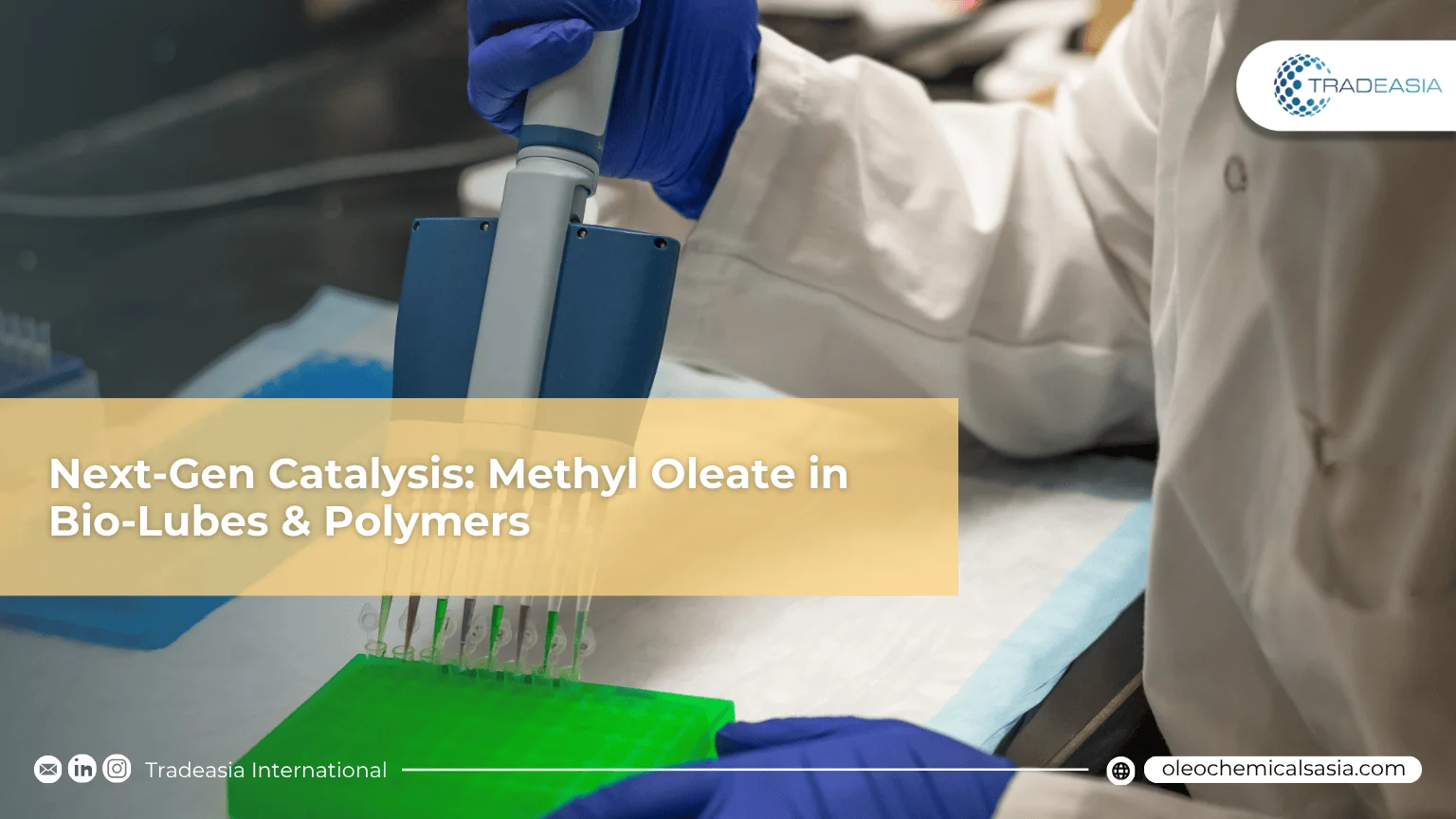Advanced Catalysis: Methyl Oleate's Role in Next-Generation Bio-Lubricants and Polymers

Table of Content
- Functionalizing the Double Bond: Overcoming Catalytic Challenges
- The R&D Pipeline: Novel Polymer Precursors
The long-term viability of Methyl Oleate (MO) in the specialty chemical market hinges on its ability to serve as a versatile chemical building block. The current focus of industry R&D is not merely on production volume, but on sophisticated chemical modification to create high-performance derivatives for the lubricant and polymer sectors. This strategy is critical for the MO market, which is forecast to achieve a steady 4.7% CAGR between 2025 and 2031.
Functionalizing the Double Bond: Overcoming Catalytic Challenges
At Tradeasia International, we see the strategic importance of continuous process innovation; after all, the true value of oleochemicals lies in what they become. We pride ourselves on understanding the technical pathways that transform palm into high-specification components. One major R&D hurdle has been the presence of polyunsaturated impurities, such as up to 20 wt% methyl linoleate in technical-grade MO, which often deactivate expensive catalysts in modification processes like Hydroformylation. However, new research shows that an essential selective hydrogenation step can overcome this, achieving significantly higher reaction rates by eliminating the catalyst poisons before the main reaction begins. This breakthrough immediately makes technical-grade MO a more viable and cost-effective feedstock.
The R&D Pipeline: Novel Polymer Precursors
Beyond lubricants, R&D is pioneering new polymer chemistries. The successful Cross-Metathesis of MO is now yielding dimethyl octadec-9-enedioate, a novel bifunctional molecule that is a crucial precursor for bio-based polyesters and polyamides. Furthermore, in the high-value lubricant sector, R&D is urgently developing ultra-high purity oleate esters to meet specifications for next-generation automotive lubricants requiring superior thermal stability. These technological advancements are not just abstract concepts; they are the concrete drivers ensuring Methyl Oleate’s continued relevance and profitability within the dynamic global chemical supply chain.
Sources:
-
ReAnIn Market Research: Methyl Oleate Market Size, Share & Trends - 2031
-
Academic/Scientific Source: Cross-metathesis of Technical Grade Methyl Oleate for the Synthesis of Bio-based Polyesters
-
OleochemicalsAsia.com: Catalytic Modification of Palm-based FAMEs: Industry Insights on Lubricant Intermediates

Leave a Comment